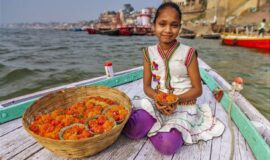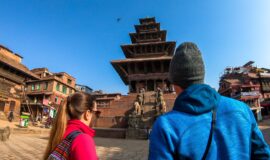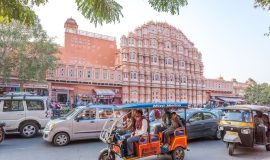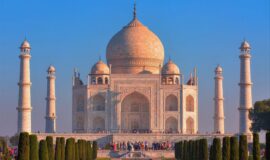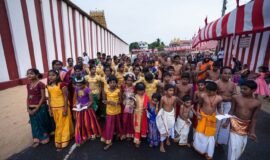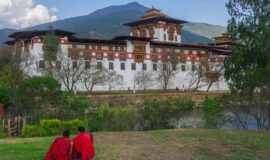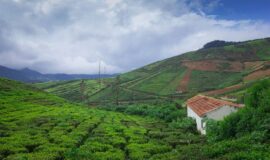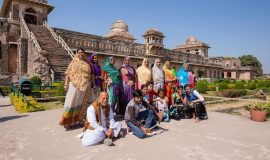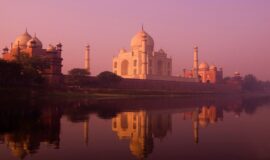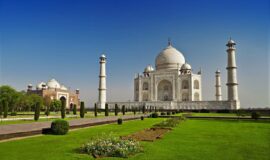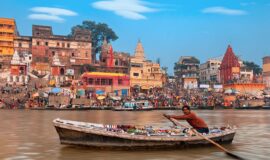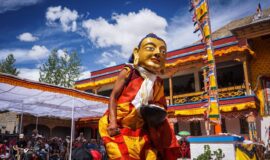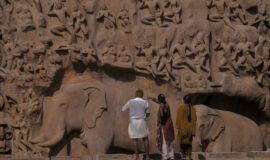Visit to Rai Praveen Mahal, Orchha
Rai Praveen Palace – A Mahal Steeped in Legend
An Architectural Marvel in Sandstone
Rai Praveen Palace – A Mahal Steeped in Legend
AN ODE TO RAI PARVEEN:
Sobha subh sani parmnarth nidhani diha Kalusha kripani mani sab jag jani hai Poorav ke poore punya suni jai Parveen Rai Teri vani meri rani, ganga kaiso pani hai
English Version: ‘O my queen Parveen, your beauty is the essence of goodness, the bridge to heaven, the schmitar to destroy evil. Your words are pure like the water of the Ganges.’
In an ode to this legendary queen, Rai Praveen’s beauty is described as the very essence of all goodness, a road to heaven, and the scimitar which destroys evil. Her words are compared to the Ganges waters’ pureness.
The palace of Rai Parveen Mahal was constructed towards the end of the 1500s by Raja Indrajit to honor his beloved. Her talent and beauty were legendary and soon reached the ears of Akbar, the Mughal emperor who ordered Raja Indrajit to send her to him. The latter refused and the emperor promptly issued him with a huge fine. The result was that she set off for Agra accompanied by the great litterateur Keshav Das to appear at the Mughal court.
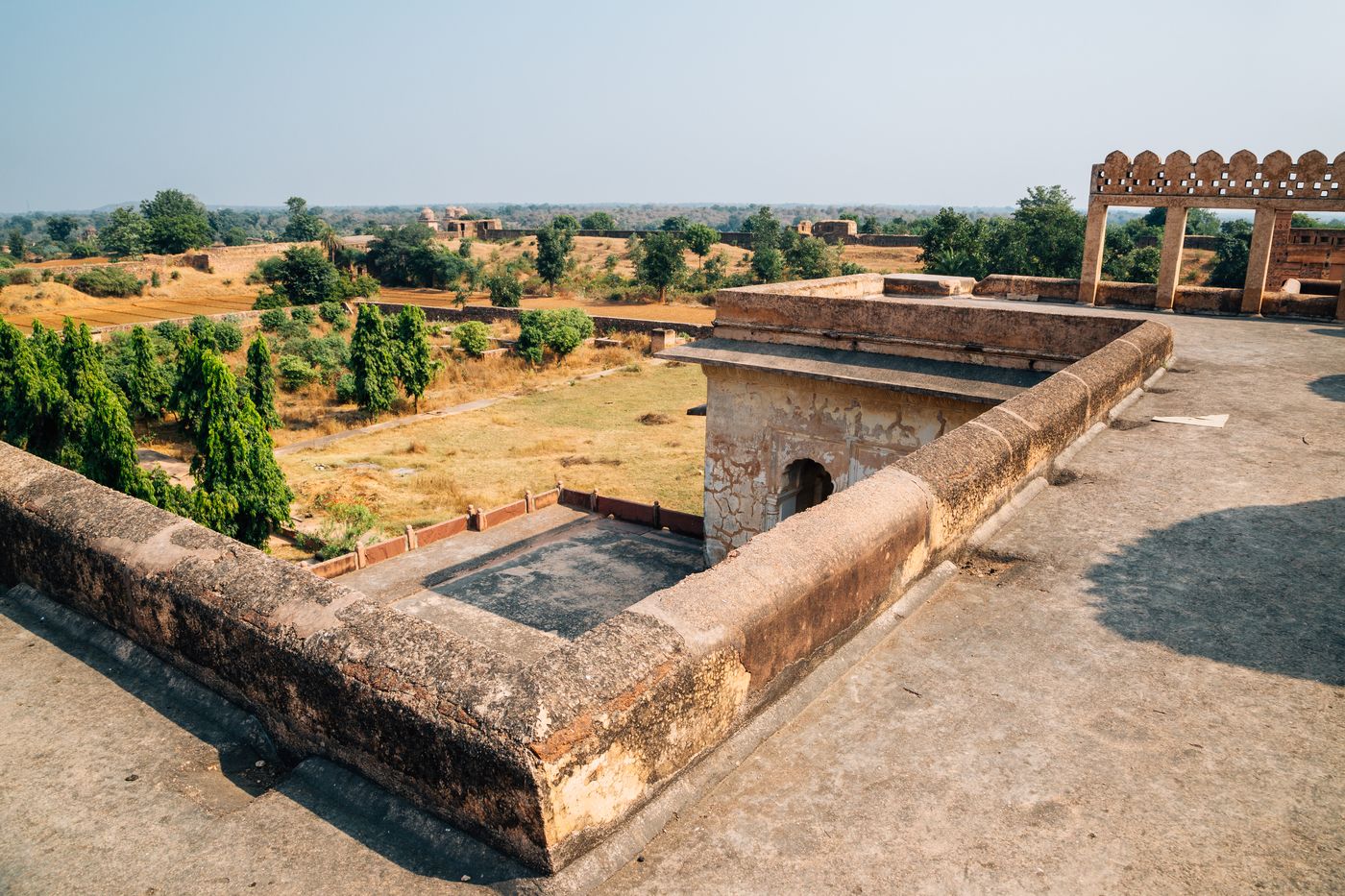
The magnificent ruins of the palace in Orchha, dedicated to Rai Parveen, known as the Nightingale of Orchha, overlooking the garden © Sanga Park
The court was dazzled by the queen’s flair for poetry and music, her sharp retorts and beauty; so much so that Akbar immediately decided that she should join his harem. She refused his advances and said that only a dog, crow, or royal servant would enjoy eating something which has been polluted and tasted by another.
‘Oh my good king, please listen to my submission. Only a royal servant or a crow or a dog will like to eat something that has already been tested and polluted by another’.
Her courage gained Akbar’s admiration and not only did he sent her back to Raja Indrajit, he showered her with exquisite gifts.
According to some folkloric tales Rai Praveen was Raja Indramani’s courtesan and was desired by the last Mughal emperor, Aurangzeb. What we can be certain of is that she was the giant of poetry during the late 1500s, Keshav Das’s muse. To a certain extent, this makes the tale of her visit to Akbar’s court more plausible.
In all these stories Rai Parveen’s beauty stands foremost, but there is another significant aspect to her character that is quite clear, namely her valor. Although she was paramour to the ruler of a minor central Indian kingdom, she nevertheless stood her ground against the mighty emperor who ruled a vast empire in northern India.
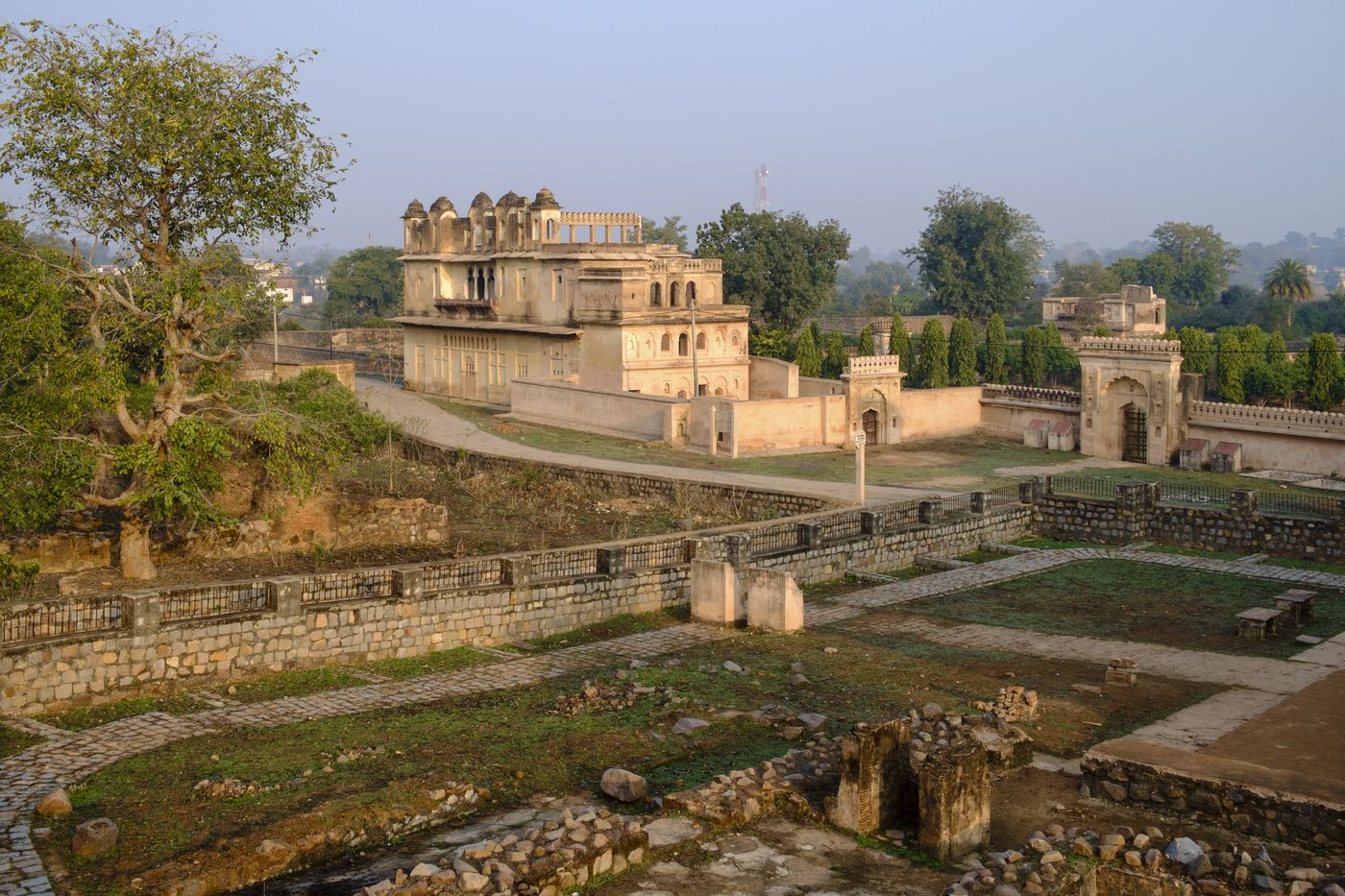
The huge arched open areas of Rai Parveen Mahal creates a cool feeling, Orchha © Konstantin Litvinov
An Architectural Marvel in Sandstone
The building materials used in the construction of the palace are mainly sandstone and bricks. It stands two stories high and is situated north from Jahangir Mahal. The two buildings are connected by a pathway of stone with wide flat steps. Between the buildings are the Hamam or royal baths, as well as the imposing eastern gateway.
To enter the garden compound, the visitor has to pass through a huge stone gateway. Because the building stands only two stories high, it equals the height of the surrounding trees. The entire complex is walled with a basement and rooftop chhatris.
D F Ruggles, in Islamic Gardens and Landscapes, elaborates, ‘the Rai Parveen complex is a walled enclosure…two-storeyed with rooftop chhatris and a basement.’
Undoubtedly the main attraction of the Rai Praveen Mahal must be the beautiful paintings found on the walls on the second floor. They are depictions of this charming beauty in Nritya mudras or dancing poses. What makes these murals so extraordinary are their dimensions; other than the rest of the paintings in Orchha, they are life-size. The depiction of Raja Indrajit sitting proudly on his steed is also noteworthy.
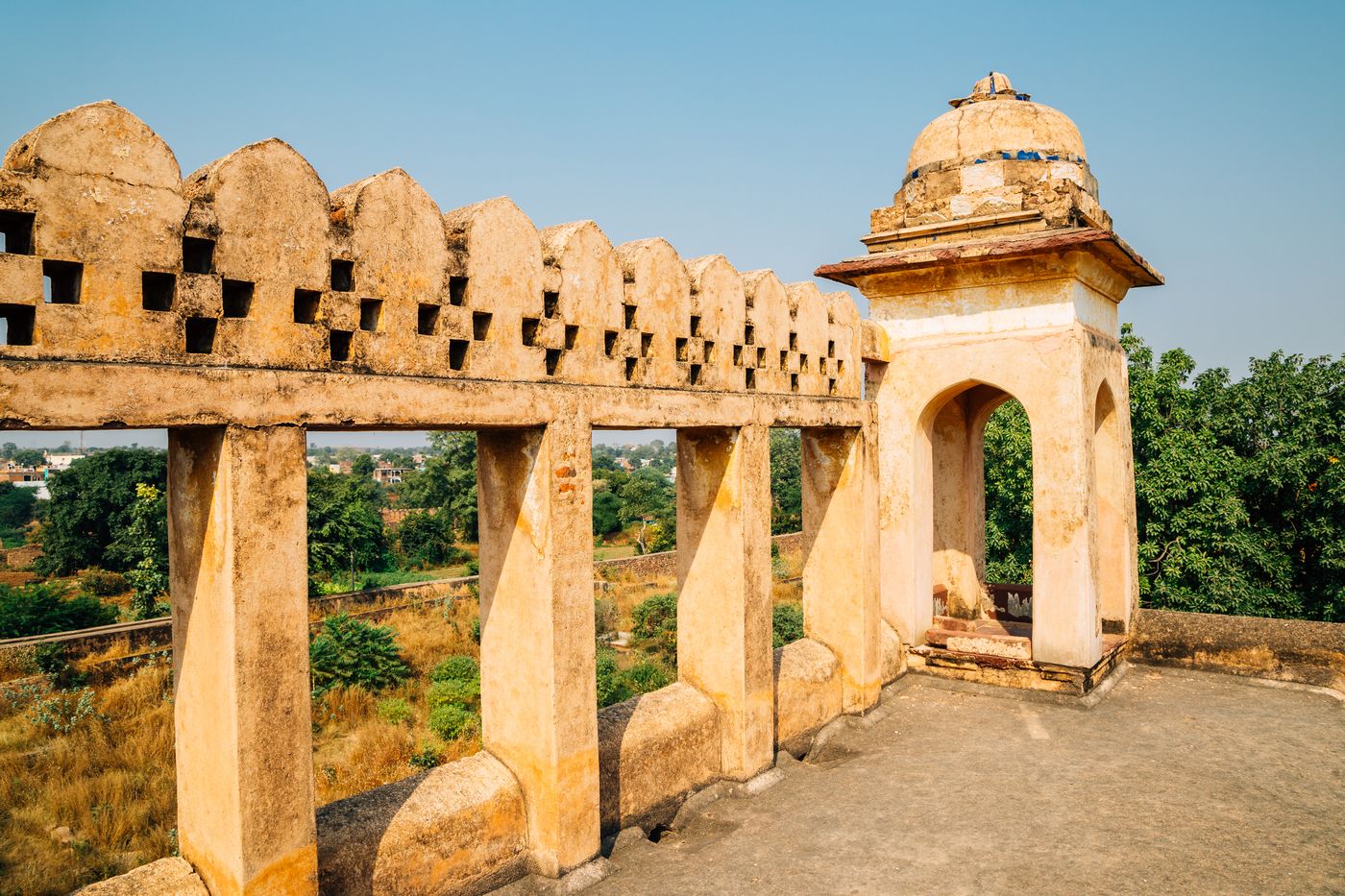
A side view of pillars on the balcony of Rai Parveen Mahal, a monument in Orchha built during the reign of King Indrajit and dedicated to poetess and musician Rai Parveen © Sanga Park
There are large windows and carved niches in all the chambers, allowing for a cool breeze to flow through the palace. Through the windows, the visitor has a splendid view of the towering Jahangir Mahal to the south.
In front of Rai Parveen Mahal lie well-manicured gardens for which water was obtained from three wells, ‘one within the enclosure and two outside its walls. Water conservation was achieved by the use of a packed mortar surface that covered all but the actual planting beds of the garden’ (Ruggles).
Water to irrigate the lush gardens came from two wells outside and one inside the compound. Abundant use of mortar surfaces, except in the flower beds, helped to preserve water. There are beautiful octagonal plant and flower beds, and numerous Ashoka trees. An elaborate irrigation system is an indication of the clever planning that went into the garden.
Anand Mandal, the extensive garden or bagh forms an integral part of the compound; its many shady trees cool the paved walkways and the ornamental basins, as well the sunken flower beds make this a true haven. It is rumored that this was the place of rendezvous for the king and his beloved.
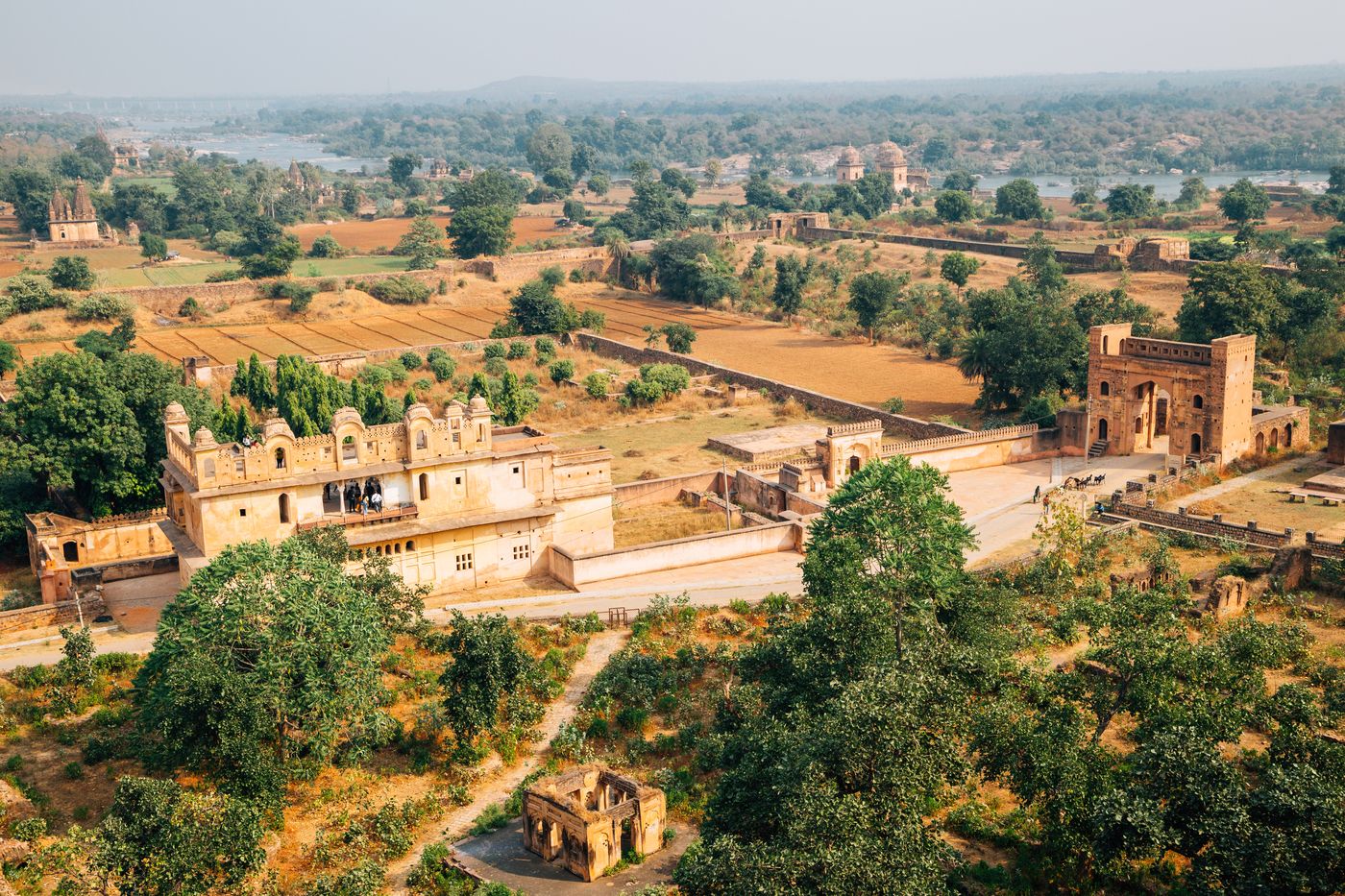
A rear view of the Rai Praveen palace, Orchha © Sanga Park

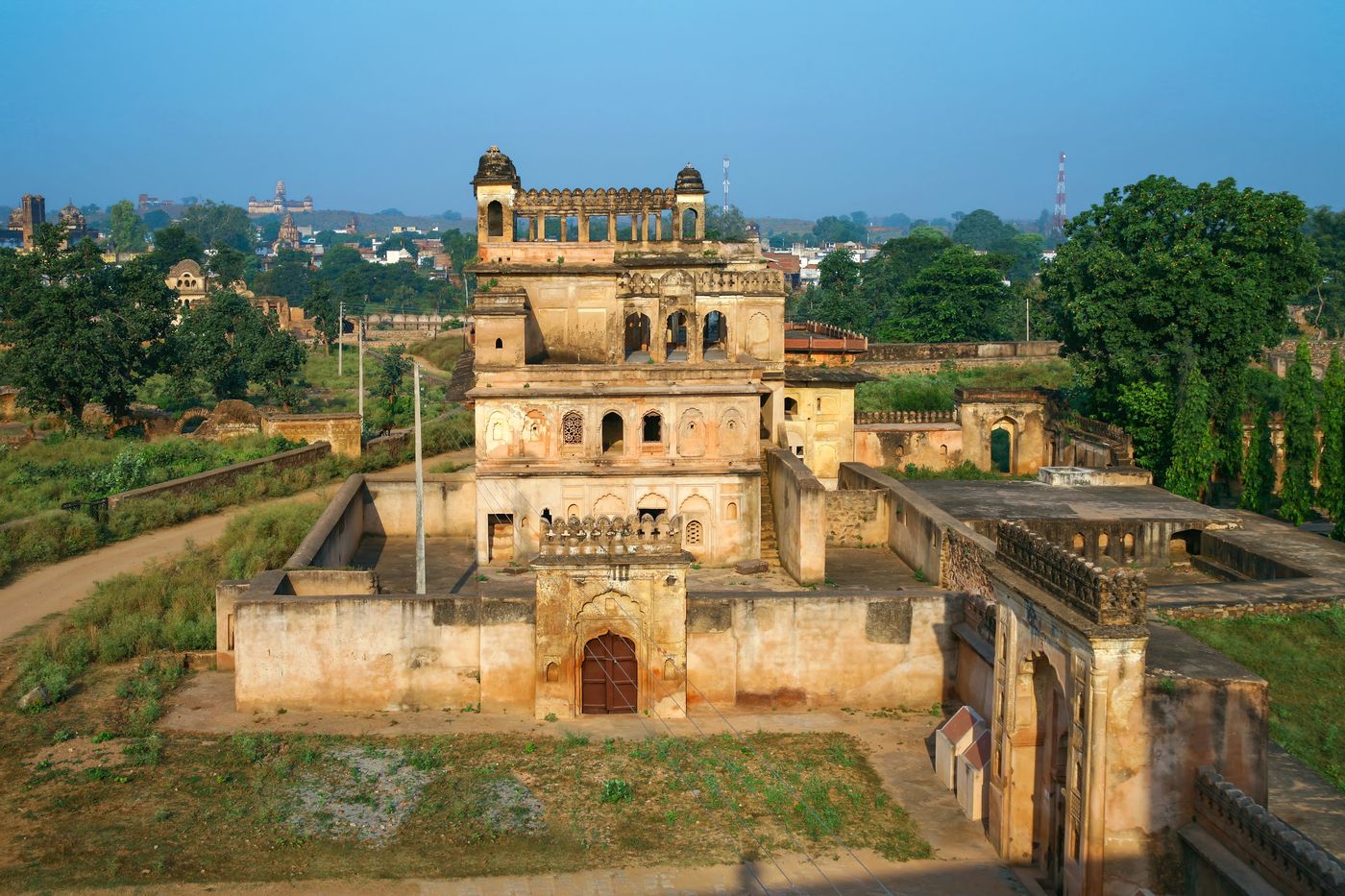
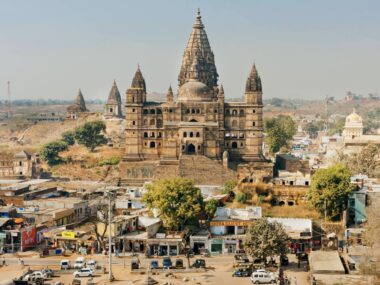
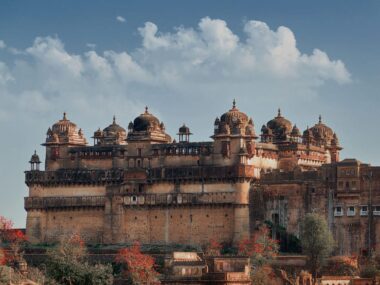
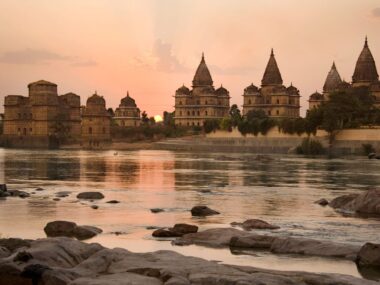
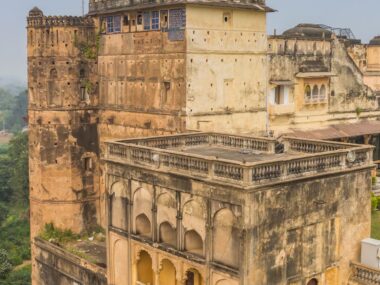

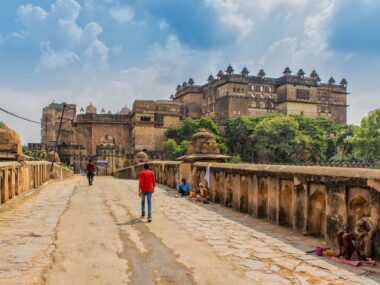
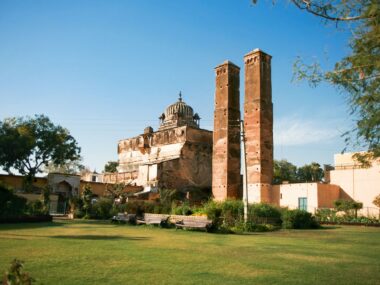
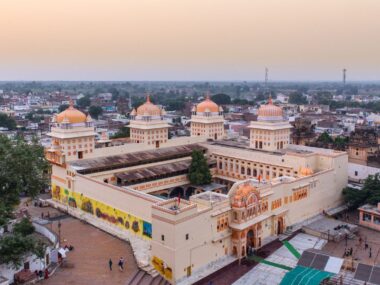
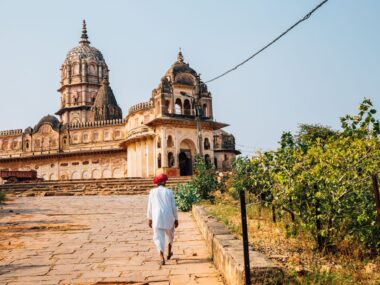
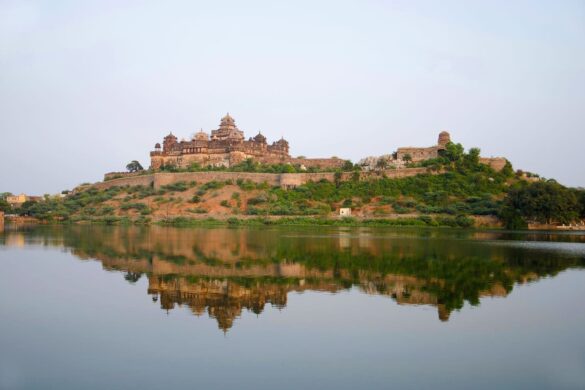
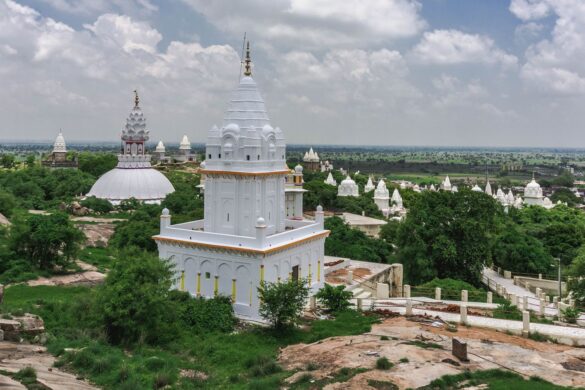

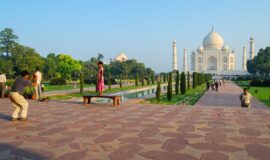
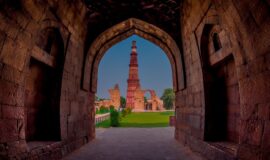

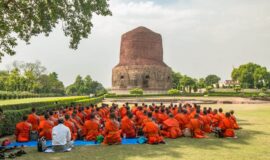

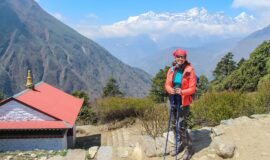
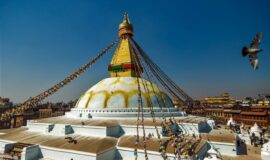

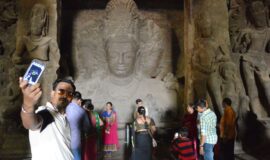



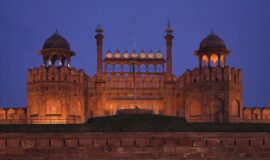
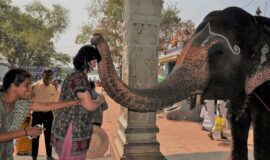
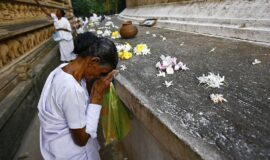

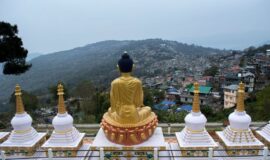
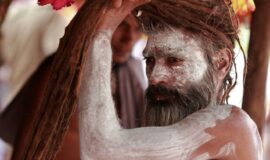
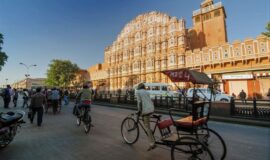
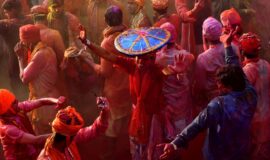

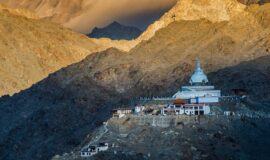


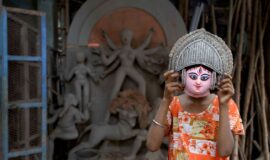



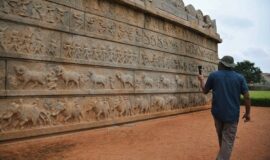

![Golden Triangle Tour with Goa [Culture + Beach Vacation] (12 days) Golden Triangle Tour with Goa [Culture + Beach Vacation] (12 days)](https://www.vacationindia.com/wp-content/uploads/2022/06/golden-triangle-tour-with-beach-vacation-270x160.jpg)

